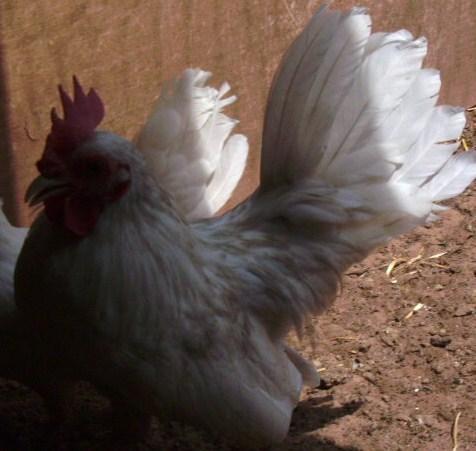Quote:
scroll down to where twin lake poultry reply about using recessive white crosess
http://www.bantychicken.com/cgi-bin...ard=unrecognized&op=display&num=2877&start=45
Here is the information from the other forum.
We chose a hen line recesive white for a few reasons knowing what we expected but with type and feather quality inprovement as the goal.
Color can always be put back in but without proper type and feather they are not OE.
I expected color fade or loss and leg color problems same as you will get with any other varity cross but for type improvement as the goal the variety used was less important than the end result which will be variety improvement, and eventual recognition.
The Opal proved to be an incomplete dominant, it made a diluted appearance with the recesive white, while it haas been proven recesive to balck, and dom. white.
All of the F1 offspring from the Rec. White did demonstrate some color less in males than females, not to say it is sex-linked as that is a whole other story just the pattern of inheritance.
As for yellow legs? I dont understand where that would even come from in OE bantams. The white OE bantams have a silvery white leg and all of the offspring have always had some light but still slate leg color, the last generation has brough leg and eye color full circle and returned more color.
As with any improvement projet this is not a 1 or 2 generation thing they all require 3 generations to start to see improvment and 5-7 to get where you are close and years of comitment to make it happen.
Too many proves in the post. In the area of research, you never prove anything- you have data that supports your position. Just a picky point on my part.
Recessive white is problematic, you never know the genotype of the bird. Is the bird extended black or wild type, does the bird carry genes for patterns, is the bird silver or gold, is the bird barred. ?????????
To come to a better answer about how the opal gene works- you will have to know the genotype of the recessive whites. If the female recessive white bird was a barred, silver, dark brown and columbian restricted bird (no melanotic) and was crossed with an opal male - the adult F1 males will show a ton of white without the opal gene.
From what I have seen, the opal males express more color than the females- especially in the crow wing pyle zone. In the opals, it appears that the gene has less control over the pyle zone and enough control over the E locus to render the E locus as if it was not signalling. The males appear to have some non gray color in their hackles and other areas of the pyle zone- this would indicate some signalling by the gold allele or "autosomal red". The opal allele also has some control over the melanotic gene because the males pyle zone is diluted from a black to a gray color.
There may be a relationship between the recessive white gene and the opal gene. From what I can gather from the cross, it appears they are alleles. It would take an F2 cross and knowing the genotypes of the opal and the recessive white to come to some conclusion.
Tim












